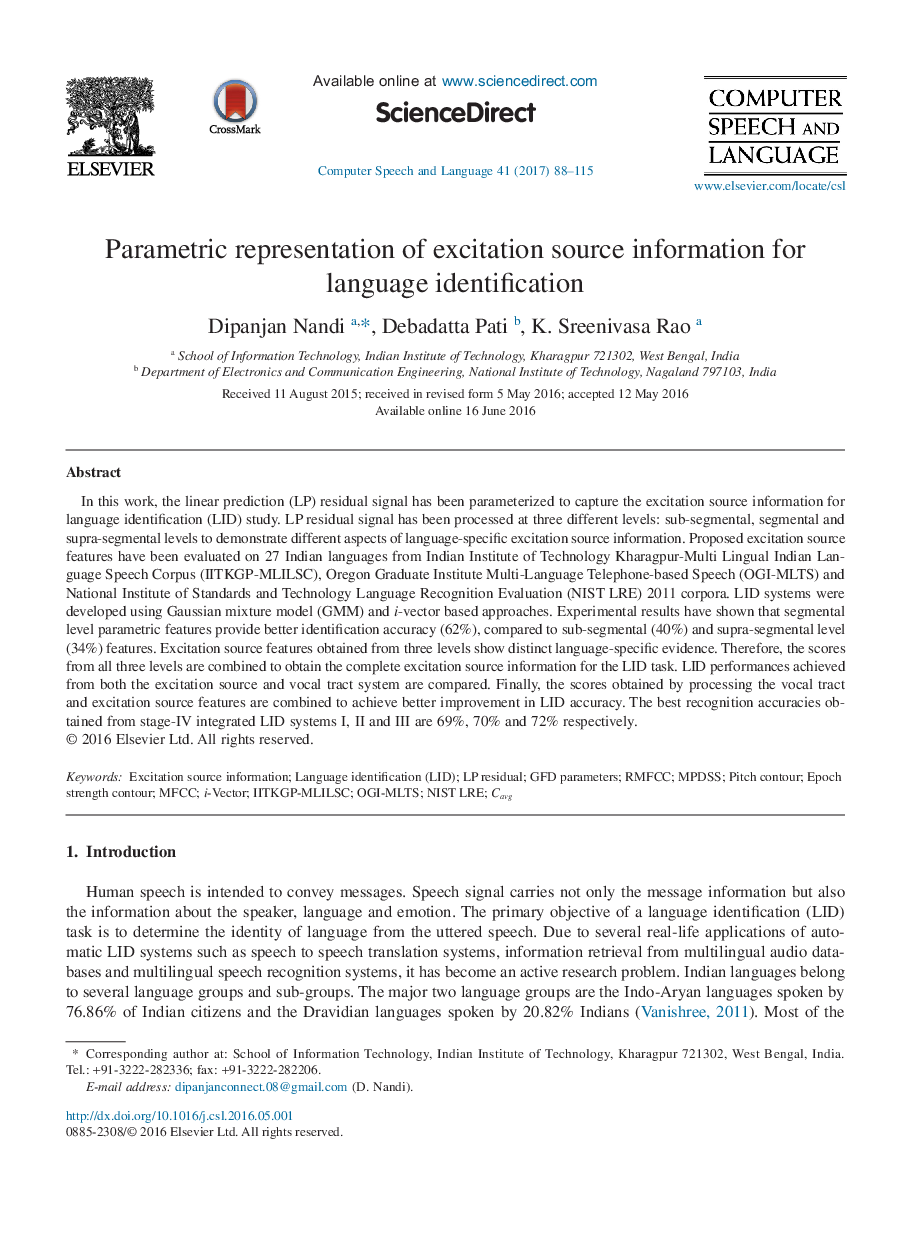| کد مقاله | کد نشریه | سال انتشار | مقاله انگلیسی | نسخه تمام متن |
|---|---|---|---|---|
| 6951519 | 1451686 | 2017 | 28 صفحه PDF | دانلود رایگان |
عنوان انگلیسی مقاله ISI
Parametric representation of excitation source information for language identification
ترجمه فارسی عنوان
نمایش پارامتریک اطلاعات منبع تحریک برای شناسایی زبان
دانلود مقاله + سفارش ترجمه
دانلود مقاله ISI انگلیسی
رایگان برای ایرانیان
کلمات کلیدی
موضوعات مرتبط
مهندسی و علوم پایه
مهندسی کامپیوتر
پردازش سیگنال
چکیده انگلیسی
In this work, the linear prediction (LP) residual signal has been parameterized to capture the excitation source information for language identification (LID) study. LP residual signal has been processed at three different levels: sub-segmental, segmental and supra-segmental levels to demonstrate different aspects of language-specific excitation source information. Proposed excitation source features have been evaluated on 27 Indian languages from Indian Institute of Technology Kharagpur-Multi Lingual Indian Language Speech Corpus (IITKGP-MLILSC), Oregon Graduate Institute Multi-Language Telephone-based Speech (OGI-MLTS) and National Institute of Standards and Technology Language Recognition Evaluation (NIST LRE) 2011 corpora. LID systems were developed using Gaussian mixture model (GMM) and i-vector based approaches. Experimental results have shown that segmental level parametric features provide better identification accuracy (62%), compared to sub-segmental (40%) and supra-segmental level (34%) features. Excitation source features obtained from three levels show distinct language-specific evidence. Therefore, the scores from all three levels are combined to obtain the complete excitation source information for the LID task. LID performances achieved from both the excitation source and vocal tract system are compared. Finally, the scores obtained by processing the vocal tract and excitation source features are combined to achieve better improvement in LID accuracy. The best recognition accuracies obtained from stage-IV integrated LID systems I, II and III are 69%, 70% and 72% respectively.
ناشر
Database: Elsevier - ScienceDirect (ساینس دایرکت)
Journal: Computer Speech & Language - Volume 41, January 2017, Pages 88-115
Journal: Computer Speech & Language - Volume 41, January 2017, Pages 88-115
نویسندگان
Dipanjan Nandi, Debadatta Pati, K. Sreenivasa Rao,
